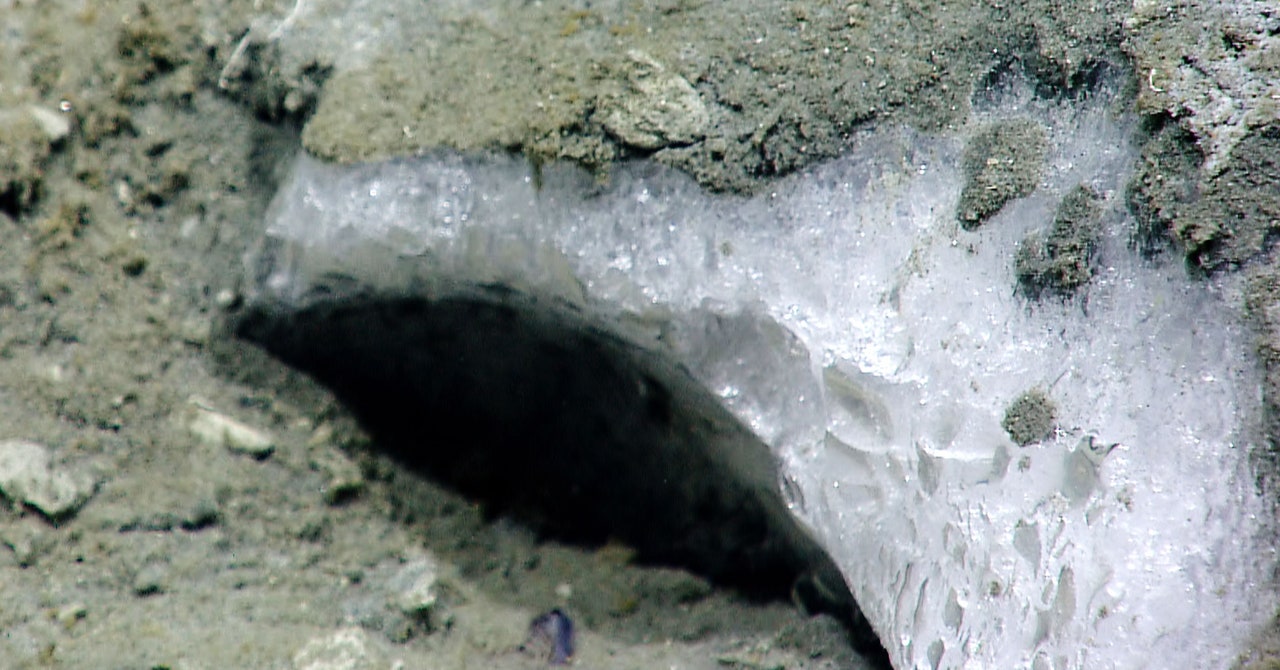
The finding suggests that far more fire ice is vulnerable to climate-induced melt than scientists realized, and it could be a significant source of planet-warming gas in the future. “It’s a very, very, very large source of carbon,” says Davies. “What we’re showing is there are routes for that carbon to be released that we hadn’t appreciated.”
These particular pockmarks formed at a depth of 330 meters. But before Davies’ team dug into the data, no one was looking for melting fire ice at this location, because it’s landward of where hydrate is stable in today’s climate, and therefore not a region of interest. At these relatively shallow depths, methane hydrate stops forming in the sediment, where temperatures are too high and pressure is too low.
“Everyone has been looking at a particular zone—around 450 to 750 meters below water depth—where hydrates are particularly vulnerable to melting,” says Davies. Hydrate is considered stable below 750 meters, where it is not likely to release methane into the ocean during climatic warming.
But things don’t always work out exactly as expected. Temperatures can actually increase deeper in the ocean, closer to the heat of the Earth itself. “Every 100 meters, it will get a bit warmer,” says Davies. “Although the pressure is increasing, the temperature is also increasing. They cross each other. And at that point is where hydrate goes from being stable to unstable.”
Davies thinks that when the oceans warmed in the past million years, fire ice that was very deep, perhaps several hundred meters below the seabed, at water depths around 1 to 2 kilometers, also warmed, destabilized—and then released gas that started to migrate upslope. As the methane traveled under the seafloor from deeper regions, it began to leak at around the 330 meter mark. “The ‘Eureka!’ moment was finding these giant craters. Due to interglacials—warm periods over the last million years—every time it melted, gas was then moving long distances up the shelf and venting,” says Davies. “I thought: Wow, [pockmarks are] forming due to hydrate dissociation in the deep water.”
Depth is an extremely important consideration when it comes to methane gas and climate, because it helps contain some of the damage. In the deepest parts of the ocean, fire ice might dissociate and burp up methane, but microbes will destroy the gas before it can reach the surface. Methane also readily dissolves in the seawater—which, yes, will result in its acidification, but at least it won’t reach the atmosphere. (Due to the same mechanics, higher carbon dioxide concentrations in the atmosphere acidify the ocean.)

